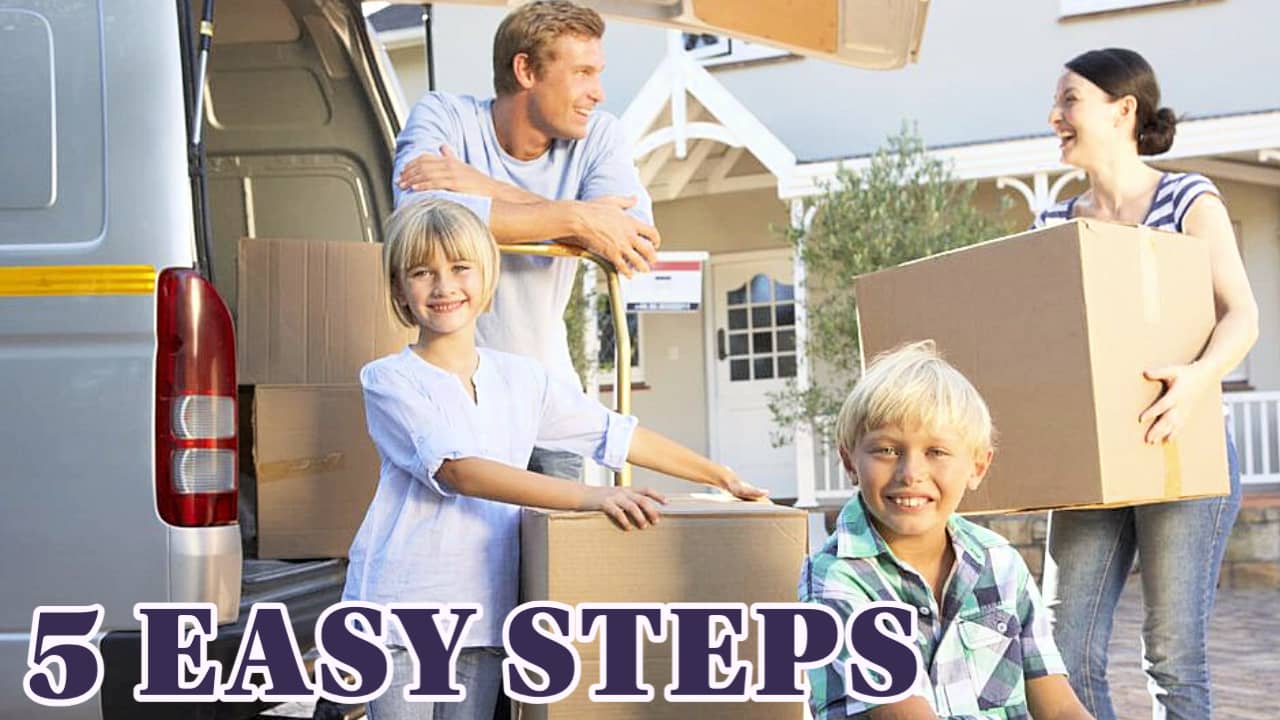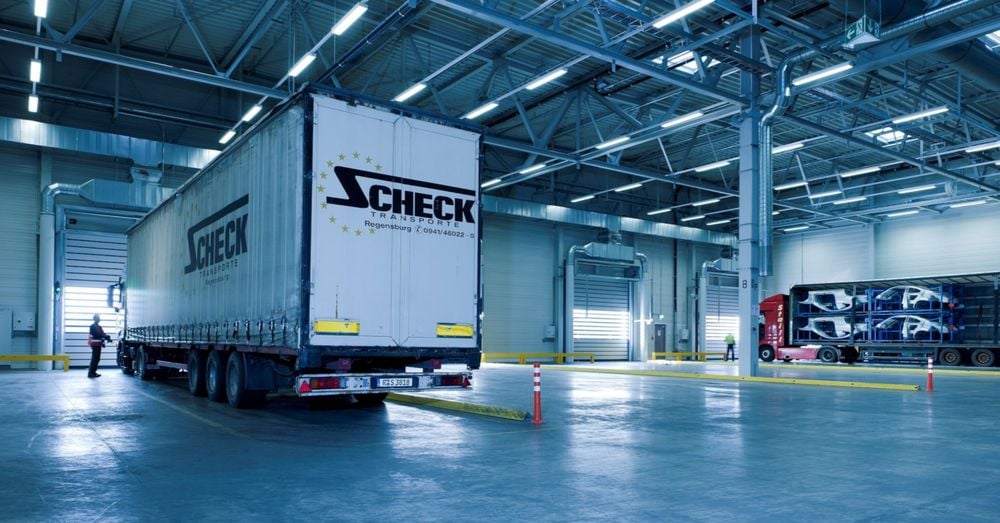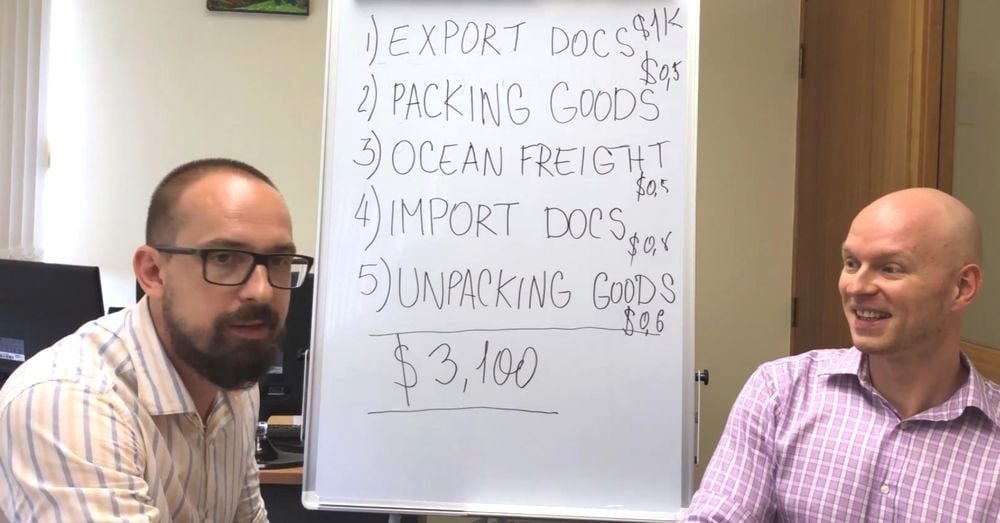
How to Save $3,105 on Importing Your Used Personal Effects to NZ
12-minute read (26-minute watch)
Max: We’re going to talk about mainly importing containers with used household goods to New Zealand.
And it’s going to be a very topical question, how to save money when you migrate and bring your stuff to New Zealand . What’s the first step when you prepare to bring your goods to New Zealand?
Watch full YouTube episode below
#1 CHECK EXPORT REQUIREMENTS
Alex: The import of your personal effects, as you’re probably aware, do not start in New Zealand. It must start in the country of origin, so you’d like to know exactly what you’re doing even before you pack your goods.
And that’s why the first and most important point of importing the personal effects to New Zealand is…
Max: Make sure you know what export documents you have to prepare and make sure you can meet all the export customs requirements . You don’t have to necessarily to use the service of a customs broker at the origin.
Some things you can do yourself and save quite a lot of money. So the first step is to make sure you know what export documents are required, how to do it, and where to get it.
So what sort of documents in many cases you would need to get or produce when you export a container?
Alex: Of course, not a single country will have the same rules, and you can’t know everything.
So our advice would be to go to a customs authority in your country and talk to them directly about the specific requirements to export the goods because this could be some rules around high-value items or antiques.
Some countries, even, do not allow to export some books of high value and that sort of stuff. Even though you own or your family own them personally, there might be some complications, or you need to get a permit to do that.
Talk to the customs officer in your country. And in 99% of the cases, they will tell you what to do and where to go.
Max: At the same time, as Alex mentioned, if you want to include a vehicle, or a motorbike, or anything of that nature inside your container, you may have to talk to a local authority and de-register your vehicle.
Make sure you have done that in advance. Make sure you’ve done all the paperwork in advance because in many cases, it could take a week or two weeks.
Alex: Right. And also keep all the documents because you will need them back here in New Zealand for import customs clearance.

Max: If you have any questions, feel free to type them in the comments right now on YouTube, and we’ll read every single question and answer them.
#2 ARRANGE PROPER PACKING
So the next step would be once you’ve done your export documents, you know what are the export requirements. We should mention that if you want to load the container yourself, you can.
If you have enough space at your residence, in many cases, you can arrange a truck driver yourself, once again, and save money. You can book the truck yourself, have it for the full day, and load it during the day.
Packing. It’s another very common question. What sort of packaging do I need? What sort of packaging?
Alex: The second tip, just let me write it down, would be packing your goods.
Max: Once you know what sort of documents you have to provide for your car, if you have a vehicle, in many cases, just general cardboard boxes will be sufficient.
You don’t have to buy any expensive or special packaging as long as it’s going to be sufficient and will withstand different shaking inside the container for the next, I don’t know, 30 to 40 days. It’s going to be more than enough.
Alex: And as a customs broker, I can’t stress it enough, please make sure that the cartons are marked with numbers. So one of the biggest costs you’ll experience while you’re clearing your container in New Zealand would be authorities costs, and they charge per time.
For example, if you bring a vacuum cleaner, and it’s one of the biggest triggers for MPI inspection, by the way, and the MPI officer would like to check this vacuum cleaner and see that the bag been emptied, that it doesn’t pose any threat to New Zealand environment, he better be able to find it really quickly because if he has to look for it for hours in a 20-foot container, it might take some time.
Some of the goods you can spend half a day looking for, I don’t know, some items because they might be very tiny. For example, a shell, or any wooden item.
If you number your packages, and you know what goods are in what carton, or chest, or whatever packaging you’re using, it will save you hundreds and hundreds of dollars in officer’s time looking for it.
Max: And it could apply the same whether it’s at the origin because some different countries have different export regulations.
Some offices would like to check and do the inspection on the export side, and in many cases, you will have another sort of inspection in New Zealand, whether it’s from the customs or MPI-based security.
Remind you, feel free to ask any questions. Type them in the comments .
What’s the next step, the third step?
#3 HOW TO BOOK THE SHIP
Alex: So you’ve done your documents, you’ve packed your goods, and the next step is ship the goods to New Zealand. For this process, which is finally out of your hands, all we need to do is to talk to a shipping line or a few shipping lines. Find the best possible rate for freight.
Max: Do you need to use a customs broker or freight forwarder for the origin?
Alex: In some countries, you have to use a broker. In some countries, you can go to customs and do the export customs clearance yourself. Again, it depends on the country you’re exporting the goods from.

Max: What about the freight? Can you book the freight directly to the shipping line or do you have to use a broker?
Alex: Some shipping lines, and you know this better than me, do allow people to work directly with them. Some will require you to go through a broker. So obviously, the broker wouldn’t be free.
You will have to pay something on top of that, of your freight rate. So just best advice, look for a company which do work with individuals and do not choose a company which doesn’t. That will save you quite a lot.
Max: For example, I know that Maersk, which is the biggest shipping line, they don’t like to work with noncommercial bookings. They prefer to work with businesses, so it’s going to be very hard for you to get a booking from them.
The same applies to another, second-biggest shipping line, called MSC, but in many cases, all the smaller ones, like CMACGM, COSCO, OOCL, would be able to offer you space and give you a reasonable market price on the freight from your closest seaport to New Zealand. So that’s your third step. Ocean freight.
#4 CHECK IMPORT DOCUMENTS REQUIREMENTS
For example, it comes out of Hamburg to Auckland. If it takes, on average, 40 to 50 days to get, you have to start doing your import clearance in New Zealand and start preparing your documents before you actually load the container on the ship in Hamburg because it may take only two weeks or three weeks for New Zealand customs and local government to process your documents, but it will take a lot more time to fix all the mistakes.
Because even though if you have read all the paperwork, there will always be something that you have forgotten or you didn’t specify properly, right?
What are the common mistakes people have with the import documents?
Alex: One of the biggest mistakes is that your packing list will be too generic, or not too specific, or missing numbers or numbers will be all over the place, so do spend some time on your packing list. Make it really neat, tidy, and easily readable and understandable for the authorities. That’s one of them. What else?
Max: You have to make sure you take photos. It always helps to prove it to a local government authority what it is inside, how does it look, so it is easier to find. And you save money on the inspection time because they charge per hour, around $120 plus GST. And it’s going to be a lot easier for them to find what it is and how it looks.
Alex: Something else we didn’t mention is there’s a list of different prohibited or restricted items with New Zealand customs.
And do spend some time and research the topic, as well. For example, for drugs, the prescribed medicine you bring to New Zealand, some of them you have to have a prescription from a doctor.
Some items must be fumigated or treated some other way: heat-treated, or cleaned, or steam cleaned or cleaned with detergent before importation.
So read the manuals, talk to customs on this side of the border, as well, way before you import something, and know exactly what permits or what treatment requirements are there for the goods you’re going to ship.
Max: In many cases, you don’t need any additional documents unless it is required by the government, which is MPI-based security. For example, you may need to provide a copy of the fumigation certificate if they want to make sure it’s legitimate and it meets the requirements.
And when you make a booking with the shipping line, make sure you request a type of document called telex release, which means it’s going to be a lot faster for you to pick up the container upon arrival in New Zealand, and you do not have to provide any additional documents.

Alex: Another important requirement is the visa. Basically, people come to New Zealand on all sorts of visas, could be a student visa, or visitor visa, or work visa, residence visas straightaway.
And customs have rules around that, as well. And knowing what your visa requirements are will also save you time, and save you some hassle, and in some cases save you some money.
So for example, if you are on a work visa, and your work visa is issued for 12 months, then you can bring your goods GST and duty-free. But if it’s less than 12 months, you most probably will be paying GST on the cost of your goods.
Well, again, we’re not going to stop on the details, but just, again, go and read all the menus available on customs website, or in customs offices, and you’ll get a better understanding of what can you bring for free, and what you can’t bring for free. What are the visa requirements for that?
Max: Talking about free stuff, I’ve just remembered a recent container with one person who decided to bring with him some alcohol without knowing that, once again, it is a restricted item, and even if it’s for personal consumption, how many bottles or how many litres can you bring without him paying any taxes, roughly?
Alex: As far as I know, a couple of litres of alcohol, of spirits, and I think it’s about 6 bottles of wine.
Max: So any more than 6 bottles, do you have to pay– say, if you bring 12, do you have to pay only 6 or 12?
Alex: No. You have to pay an excess of 6
Same for the cigarettes, as well. So you only can bring 50 cigarettes to New Zealand duty-free now, and so the rest, even though you consider them your personal effects, and you bought those pack of cigarettes, or even cigars, in many cases could be your collection of cigars, you still have to pay big duties and GST on that, as well.
Max: Imagine that your container has arrived in New Zealand port, and you’ve done your customs clearance, your paperwork is solid, the next step is to make sure you book the truck in advance and move it from the port to your unloading facility.
#5 BOOK NZ TRUCK & UNPACKING
Once again, you do not have to use a customs broker or a freight forwarder to arrange it. You can book it yourself.
You just go to a trucking company, a container company, and you can book directly the transport or the container from the port to any MPI and customs-approved warehouse, could be a storage facility, and you can hire the labour yourself, bring a couple of mates, and unload the container yourself.
The only requirement for biosecurity is that you have to have an authorised person by New Zealand government, to certify that there’s no dodgy stuff in your container, like restricted items, or dirt, or soil, which might cause the biosecurity threats.
So you can’t just unpack it anywhere. You always need that person next to you stating and signing the documents that, “Yep. I’ve checked it.”
And this person will have to supervise your unloading throughout the whole process. So whatever it takes you. Four hours, five hours. You’re going to pay them an hourly rate, but it’s going to be still, in many cases, cheaper.
If you want to take a risk, and do it yourself, and take on the hassle, then yes, it’s going to be cheaper to book the truck, arrange the time and space with your storage facility, and then make sure you have an accredited person staying with you all the time.

And once it’s done, you call back the trucking company, and in the next one or two days, they’ll pick up your empty container. And pretty much, your job is done.
Alex: Which also must be done soon because you only have a few days before all sorts of storage and container hire charges start.
Max: So you have seven days to unload your container from the time it hits the ground at the New Zealand port. And time flies very fast.
You won’t believe how much time it could take to book if there is an inspection by the customs or MPI. They’re very busy. Sometimes it could take two or three days. So make sure you’ve done it in advance.
Alex: And honestly, you don’t want to leave it until the last day. We have lots of people coming to us and telling us, “Look, guys, our container has arrived today, yesterday, or two or three days away from New Zealand, just about to arrive.”
That’s too late. It means that 95% of the time, you will pay some sort of storage charge, or detention charge, or demurrage charge.
There is a whole lot of charges which the shipping industry come up with to shield themselves from just giving away the precious time of someone having their container or occupying their space.
So the best time to do your import clearance and contact the authorities is at least two weeks before the container arrives in New Zealand.
Max: In our experience, one of the biggest costs is to pack the container because many companies charge, I would say, on average, $1,000 to provide the labour and packing materials. So on the first step, you will easily save $1,000 if you do it yourself.
Then once again, that’s on the packing, export documents.
You can save, as well, $500 on the export clearance if you don’t use a customs broker and another maybe roughly $500 if you book yourself with a shipping line without any middleman.
It depends on the season. If it’s a busy season before Christmas or some holidays, expect prices to go a lot higher, and it’s going to be harder to find space.
Maybe $500 on the import documents, import clearance. Especially if you have a long packet list with restricted items, it’s going to take probably the whole day for the customs broker to prepare, fix the mistakes on your unaccompanied baggage declaration.
$600 on the labour to unload it. As you know, New Zealand is a very expensive country and labour costs heaps.
So if you do it yourself if you bring your mates, and they’d be happy to spend half a day unloading your container, you could save $600 there, and you can book the truck yourself. So here you go. $3,100 easily you’ve just saved, and you can spend it on your entertainment.
Alex: Yeah. And then those $5, you can squeeze some money and go and buy yourself a cup of coffee or a beer.
Max: Good point. Can’t spend a day without coffee, in New Zealand especially. So here you go. Thank you for your time. Hope you enjoyed it.
If you have any other questions, you can type them in the comments , and we will make sure to answer every single one of them. If you like this kind of stuff, make sure you subscribe to our channel, and we will bring you something interesting again next week.

Stay tuned. Thank you for your time and talk to you later.
We’d love to answer any of your questions! Contact us now
P.S. Do you know of other people that will find this article useful? Please share it on social media. Thank you!
